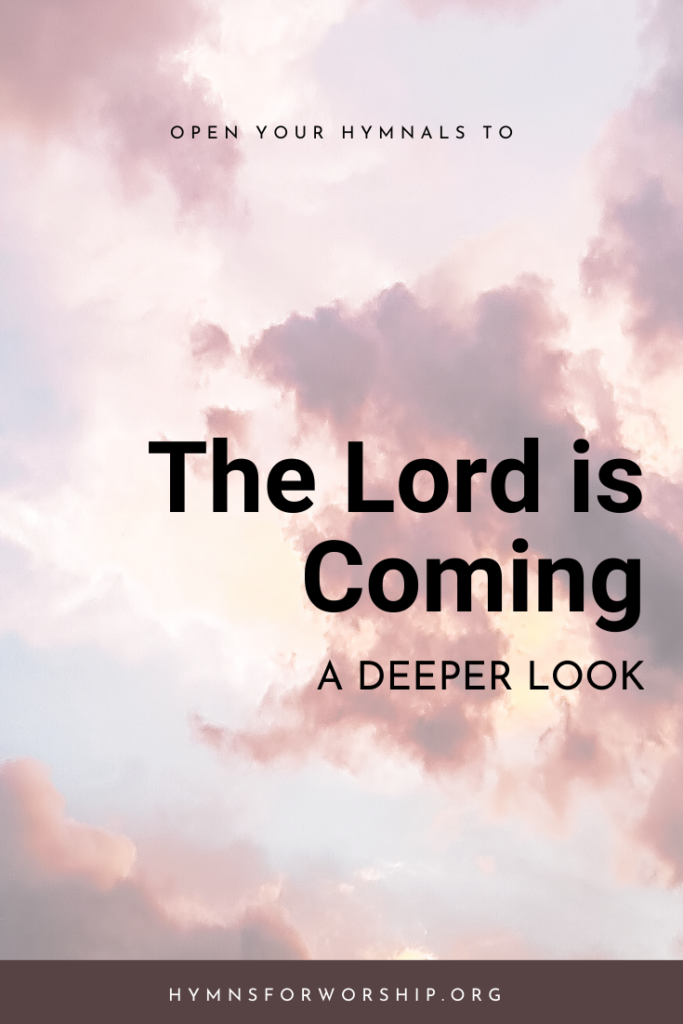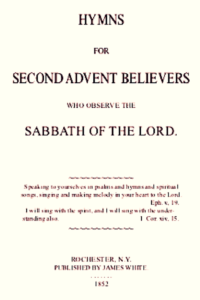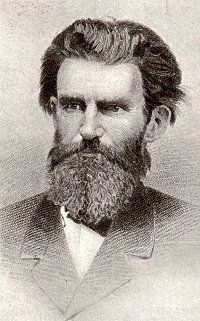It was the belief about the second coming of Christ that the Seventh-day Advent movement was formed. Hence, it is not a surprise that this is one of the main themes in our worship and theology.

This particular hymn was sung during those early formative years of Adventism. For the Adventist to sing this after the year of 1844 took a lot of faith and courage. They expected Christ to come to earth October 22, 1844. He came, but not in the popular way it was understood. Five years later, after much light was given on the subject, this hymn was published. From how it was written, it is obvious that they still had every reason to sing about Christ’s imminent return.
You may have been singing this hymn in your church (or not), but did you know about these four things about it?
Who wrote the text?

The original writer of this poem is anonymous. It was written around 1849 but it first appeared in the 1852 hymnal, Hymns for Second Advent Believers, which James White compiled. Apparently, the words were loved and well-received among the Adventists that it was found in every SDA hymnal printed since then. The original poem has eight stanzas.
Why they never included it, I don’t know. I would have loved to sing it. Too graphic or apocalyptic maybe? Anyway, these are the ones that did not make it to our current hymnal. The asterisks (*) mark the lines that were included but reworded.
[one-half-first]
The Lord is coming! Saints rejoice!
We soon shall hear His glorious voice,
Majestic, uttered from afar,
As on He hastes His conquering car.
*The Lord is coming! Vengeful, dire
*Are all His judgments and His ire,
And none can hope t’ escape His wrath,
Who walk not in the narrow path
The Lord is coming! Seas retire!
Ye mountains melt to liquid fire!
Ye oceans cease to ebb and flow!
His stately steppings ye should know.
[/one-half-first]
[one-half]
The Lord is coming! Who shall stand?
Who shall be found at His right hand?
He that hath the white garments on
That Christ our righteous King hath won.
The Lord is coming! Watch and pray!
Watch ye, and haste unto the day;
So shalt thou then escape the snare,
And Christ’s eternal glory share
The Lord is coming, let this be
The herald note of jubilee
*And often as we meet and part
The salutation from the heart
[/one-half]
About that 4th Stanza
While the first three stanzas in the current hymnal were anonymously written, it is a common knowledge that the fourth was added about 40 years later by Mary A. Steward.
Mary Alicia Steward (1858-1947) is the daughter of Thaddeus and Myrta Steward, early Sabbath-keeping Adventists who received the advent message in 1852. Mary, who was born in Wisconsin, later on, moved with her family to Michigan and acquired studies in Battle Creek College. She then went on to become a proofreader for the Review and Herald from 1880-1892. She also became J.H. Kellogg’s personal secretary, and then taught music and English at the academy in Graysville, Tennessee. Over there, she worked at the Southern Publishing Association from 1900-1906.

It was during her stint as a proofreader at the Review that Mary received a letter from Ellen White. In the letter, Mary was urged to have “meekness and lowliness of heart.” The rest of the letter may appear to be quite stern to some, but it was enough to initiate a transformation in her life. We know this because she continued to work closely with Mrs. White until she died in 1915.
She continued to work for the Review until 1937 and was mainly known to be the chief compiler and editor of the first Index to the Writings of Ellen G. White. She retired at the age of 79.
Who wrote the tune?

One of the disadvantages of the early Advent hymnals was that it contained no music. It was a common practice to use tunes that were already known to people. If the phrasing matched the meter of the tune, then it was more likely to be used.
Hence, the only time a specific tune was used to match these words was in the 1886 Seventh-day Adventist Hymn and Tune Book most often referred to as Hymns and Tunes. The same hymn tune, WARRINGTON, was carried over to the 1941 Church Hymnal. However, it was seldom sung.
In the making of the 1985 SDA Hymnal, the committee decided to match it with a more well-known tune THE SOLID ROCK, which is the same hymn tune for the familiar text “My Hope Is Built On Nothing Less.” This particular tune was composed by William B. Bradbury. Melvin West (1930-) reharmonized the tune making the flavor somewhat different.
The writers of the Companion to the Seventh-day Adventist Hymnal suggests that when singing this hymn, some sort of variety can be achieved. The first three stanzas can be sung to the accompaniment of SDAH 522, while the final stanza can be sung in unison on the melody while the accompanist plays West’s harmonization in SDAH 200. Also if a descant is desired, the sopranos can sing the alto part in a higher octave.
Salutations of the heart
This hymn also reveals a practice that the early Advent believers engaged in. The latter part of the first stanza reads, “And when we meet and when we part, the salutation from the heart.”
Probing deeper into this, what it really meant was that the Sabbathkeepers adapted what Paul mentioned in the Bible as a holy kiss (1 Corinthians 16:20-21, 1 Thessalonians 5:26). It was to “be regarded as a sign of fellowship to Christian friends when parting, and when meeting again after a separation of weeks or months.” (Early Writings, 117.)
Later on, this practice was abandoned. Some abused the situation, and Ellen White wrote to one brother, “You have been indiscreet in practicing the salutation and have made little difference as to the time and place, whether you were surrounded by unbelievers or not, and have been ready to practice it too frequently, and no good but evil has resulted from it” (Manuscript Releases, Vol. 7, p. 208).
Regardless of this old practice, the message of the Lord’s soon return is still as relevant and exciting as it was. The Lord is coming, let this be the herald note of jubilee!
Sing this hymn privately or with your congregation now.
Like this article? Share it!

